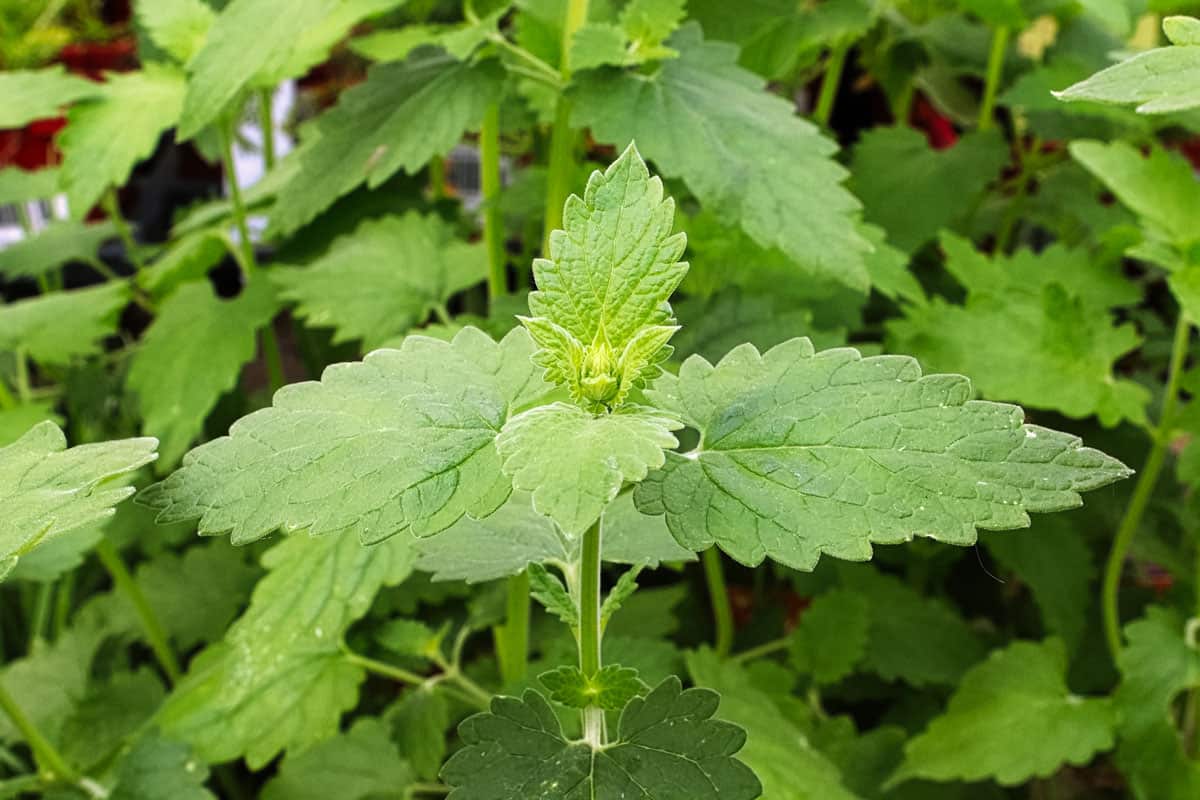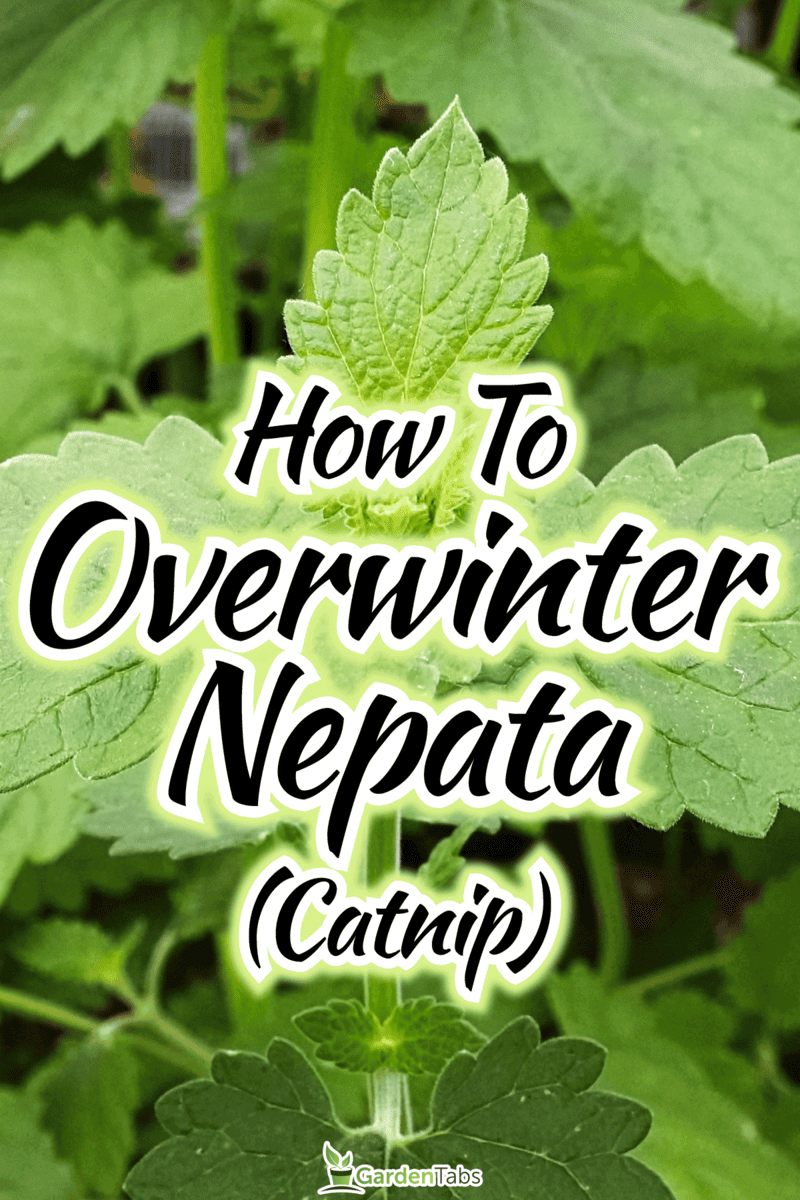As a cat lover and a gardener, you want to make sure your catnip plant stays alive over the winter. Learning how to properly overwinter your nepeta will build your confidence and help keep your plants healthy over the cold months. We did our research on how to overwinter your plant and here’s what we have to share.
To overwinter your nepeta (catnip), you need to cut back its stems, water it before the first frost, and remove dead foliage. Also, avoid fertilizing and applying thick mulch when you know that winter is coming.
Following these steps will help prepare your catnip plant to survive the cold season and easily grow back in spring. In this article, we'll go over the specifics of this method as well as some general information about nepeta. Keep on reading to learn all about it.

Cut Back Its Stems
The catnip plant, also known as Nepeta Cataria, is a resilient herb that thrives in zones 3-9 in the United States. The winter months can be dangerous for catnip and other shrubby herbs, if left unprepared.
You need to protect it during the winter months so that cold fronts, strong winds, and frost heaves won't stop the herb from sprouting back in the spring.

Cutting back your Nepeta removes the majority of the more cold-sensitive parts, which will help your catnip plant look less scraggly during the dormant season.
Including a green tip, aim for a stem that is approximately three to four inches long from the ground. The newer, greener vegetation must be removed to achieve this, leaving just an inch of growth from the current year.

Trim Back New Growths
Trim back new growths to about eight cm, so that they won't be harmed by the cold after being cut down to this length.
You may start pruning your catnip plant once they have had their first few touches of frost and the foliage starts to wilt. Cut back the stems with a good set of shears to the recommended length above the soil line.
Click here to see this 3 Pack of Handheld Pruners Set on Amazon.
It's always a good idea to leave the cut stems on the ground. It will help you locate the plants by marking where they are. That can be huge assistance the following spring before the new foliage emerges.
The cut stems can also serve as mulch for your nepeta and other plants.
Note that there is no frost tolerance when getting a back cut in the fall. It is ideal to choose a day without rain so that the cut areas may dry more quickly and there won't be bacteria entering your plant. Powdered sulfur can also be used to seal off the open spots.
Water It Before The First Frost

Give your catnip plant its last drink of water at the same time you complete your fall trimming. This will help it enter dormancy without experiencing stress from dehydration thanks to this deep, final watering.
Plants under stress are more susceptible to wind, cold, and other adverse weather conditions. Additional protection from cold is also provided by filling up plant tissues with water.
Some weeds that favor cooler weather may start to thrive when your catnip plant starts to slow down, and a variety of weeds can grow over winter. Even little weeds can develop very quickly in the next spring.
Drag or dig up undesirable plants by the roots throughout your garden. You can water the area well if the weeds are proving difficult to remove. This softens the soil and makes it easier for the roots to slip out.
Fall hydration is crucial for most plants to stay healthy over the winter. Water your garden well before frost. When your finger cannot press the earth's surface inside, this is the ideal time to water.
If you want to ensure that water soaks deeper into the soil, let the sprinkler run for a bit in your garden beds. Directly hydrating the plant's roots is more efficient than shallow watering.
Given that catnip has very low water requirements, clay- or sand-rich soil retain sufficient water for your plant. It will be able to handle dry spells.
Remove Dead Foliage

Contrary to a common belief, perennials are not protected by having their old leaves persist throughout the winter. Allowing it to remain in place may lead to a variety of problems.
The dead foliage gives garden pests plenty of hiding places to spend the winter. They can not only remain hidden and thrive, but they also lay their eggs under cover. Naturally, additional pests can damage your plants the next year as a result.
Old foliage can also be a place for diseases to get their footing. Late-fall weather is ideal for fostering the growth of mold and mildew on the decomposing foliage. Once it does, it lingers and waits to strike in the next spring.
Cut your catnip plant back to the ground if it has been afflicted by insects or disease. Insects or diseases can be stopped from returning the next year by removing the afflicted foliage.
Regarding Mulching

Adding an excessive amount of mulch around plants too early in the winter or failing to remove the extra layers when winter is through has its downsides.
Don't use too much mulch, as well. Mulch can assist the soil to retain heat and moisture, but too much mulch will stop the sun from warming the soil.
Not all plants require an additional layer of mulch to survive the winter. Mulch can harm some plants by trapping moisture against stems, which causes rot.
Mulch is suggested in the following three circumstances:
- Newly planted perennials. A layer of insulating mulch can be helpful for perennials you plant in the fall because they haven't had time to form deep root systems.
- Cold-sensitive perennials. When their roots are covered in mulch, plants that are sensitive to frost in your region are more likely to survive the winter.
- Areas where freeze-thaw cycles occur frequently. Temperature changes over the winter can cause soil to expand and compress, a problem that is most common in Hardiness Zones 7 and 8 of the USDA. This may cause frost heave, which causes plants to be forced out of the ground, exposing their roots to danger.
When the top one to two inches of soil have frozen, that is the ideal time to mulch perennial plants. Since the mulch acts as insulation, the earth remains constantly chilled throughout the winter.
For perennials to survive the winter, loose organic mulch made of pine needles, bark chips, shredded leaves, and straw is a wonderful option.
As winter approaches, refrain from fertilizing your catnip. This will simply promote new growth that cannot handle the winter's harsher conditions.
Snow Cover
This can be a different kind of mulching, that is, through the use of snow. Snow mulching keeps the ground frozen rather than subduing weeds and conserving water.
Hardy plants won't die from frozen ground, but they will die from repeated freeze and thaw cycles. Plants may be forced out of the ground by the repeated expanding and shrinking of the soil.
Because it acts as insulation, a coating of snow makes a great winter mulch for plants. The next best alternative is winter mulching if there isn't enough snowfall to offer that protection.
Nepeta Cataria is a Perennial Plant

Because they require less upkeep than other plants and flowers, perennials are a popular choice among gardeners. Many of them can endure colder regions and flourish all year long.
If they are properly cared for, they "hide out" during the winter and reappear the following year stronger than ever. They differ from annual plants, which have a short lifespan of just one year.
Your catnip plant should finish blooming by the time summer goes into autumn, so trim back stems and dramatically cut back on watering. Doing so will assist in hardening it off and preparing them for cooler and damper circumstances.
After the last hard frost of the season, cat lovers with a green thumb can cultivate catnip from seed. With the right care, this herbaceous flowering plant will come back every year. Remember that, like most cats, catnip needs a lot of space to develop and thrive.
In Closing

Cutting back the stems, watering them before frost, and removing dead foliage, will help your nepeta thrive over the winter. Knowing how to safeguard your catnip throughout the cold season is crucial since depending on the zone you live in, winter's chill can be harmful for this popular perennial.
If you found this article helpful, you might also like our other posts.



